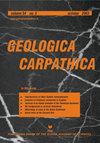利用地震反射和井资料进行深部重力数据解释:以埃及东部沙漠West Gharib-Bakr地区为例
IF 1.5
4区 地球科学
Q4 GEOSCIENCES, MULTIDISCIPLINARY
引用次数: 1
摘要
通过对埃及东部沙漠West Gharib-Bakr地区重力资料、地震反射资料和钻孔资料的严格处理和分析,获得了该地区深部构造的总体概况。在此背景下,应用了几种解释技术来了解更多关于基底上构造和基底内源的信息。解释开始于对地震数据的回顾,以澄清中新世地层顶部的结构元素,在那里构建了许多等时反射图,并已迁移到深度图中。利用基于谱分析的快速傅立叶变换滤波对布格异常图进行处理,将重力异常分解为分量。在地震等等值线和密度控制条件下,进行了重力剥离。计算每个岩石单元的重力效应,并逐步从原始数据中去除,得到新的前中新世重力图。为了确保更可靠的结果,对剥离后的地图进行了进一步的过滤和分析处理。地震分析结果表明,中新世水平构造构型简单,苏伊士湾沿岸蒸发岩厚度明显增加。相比之下,对条带重力图的分析显示,前中新世水平构造更为复杂,基底表面断层数量和长度都在增加。剖面分析显示,NNW-SSE(压缩)和ENE-WSW(张拉)两种主要作用力形成了N0-20°W和N50-70°E两个主峰。这些模型证实了一个粗糙和破裂的基底表面,没有任何岩浆侵入穿透沉积物的证据。基底地形图在区内圈定了5个以脊/鞍相分隔的盆地/次盆地。本文章由计算机程序翻译,如有差异,请以英文原文为准。
Deep gravity data interpretation using seismic reflection and well data: A case study of the West Gharib-Bakr area, Eastern Desert, Egypt
Abstract A rigorous processing and analysis of the gravity data with seismic reflection and borehole information enabled a general view of the deep-seated regional structures in the West Gharib-Bakr area, Eastern Desert, Egypt. In this context, several interpretational techniques were applied to learn more about the supra-basement structures and intra-basement sources. The interpretation started with a review of the seismic data to clarify the structural elements on top of the Miocene strata, where a number of isochronous reflection maps were constructed and had migrated into depth maps. The Bouguer anomaly map was processed using Fast Fourier Transform filtering based on spectral analysis to separate the gravity anomalies into its components. Gravity stripping was also performed under the seismic isopachs and density controls. The gravity effect of each rock unit was calculated and progressively removed from the original data to obtain a new gravity map on top of the Pre-Miocene. To ensure more reliable results, further filtering and analytical processes were applied to the stripped map. The results of seismic analysis show simple structural configurations at the Miocene level, with a significant increase of evaporite thickness along the Gulf of Suez coast. In contrast, analysis of the stripped gravity map reveals a more intricate structure at the Pre-Miocene level, with increasing numbers/lengths of faults on the basement surface. Lineament analysis shows two major peaks trending N0–20°W and N50–70°E, produced by two main forces in NNW–SSE (compression) and ENE–WSW (tension) directions. The models confirmed a rough and ruptured basement surface, with no evidence of any magmatic intrusions penetrating the sediments. The basement relief map delineates five basins/sub-basins in the area which are separated from each other by ridges/saddles.
求助全文
通过发布文献求助,成功后即可免费获取论文全文。
去求助
来源期刊

Geologica Carpathica
地学-地球科学综合
CiteScore
2.40
自引率
23.10%
发文量
26
审稿时长
>12 weeks
期刊介绍:
GEOLOGICA CARPATHICA covers a wide spectrum of geological disciplines including geodynamics, tectonics and structural geology, volcanology, stratigraphy, geochronology and isotopic geology, karstology, geochemistry, mineralogy, petrology, lithology and sedimentology, paleogeography, paleoecology, paleobiology and paleontology, paleomagnetism, magnetostratigraphy and other branches of applied geophysics, economic and environmental geology, experimental and theoretical geoscientific studies. Geologica Carpathica , with its 60 year old tradition, presents high-quality research papers devoted to all aspects not only of the Alpine-Carpathian-Balkanian geoscience but also with adjacent regions originated from the Mediterranean Tethys and its continental foreland. Geologica Carpathica is an Official Journal of the Carpathian-Balkan Geological Association.
 求助内容:
求助内容: 应助结果提醒方式:
应助结果提醒方式:


